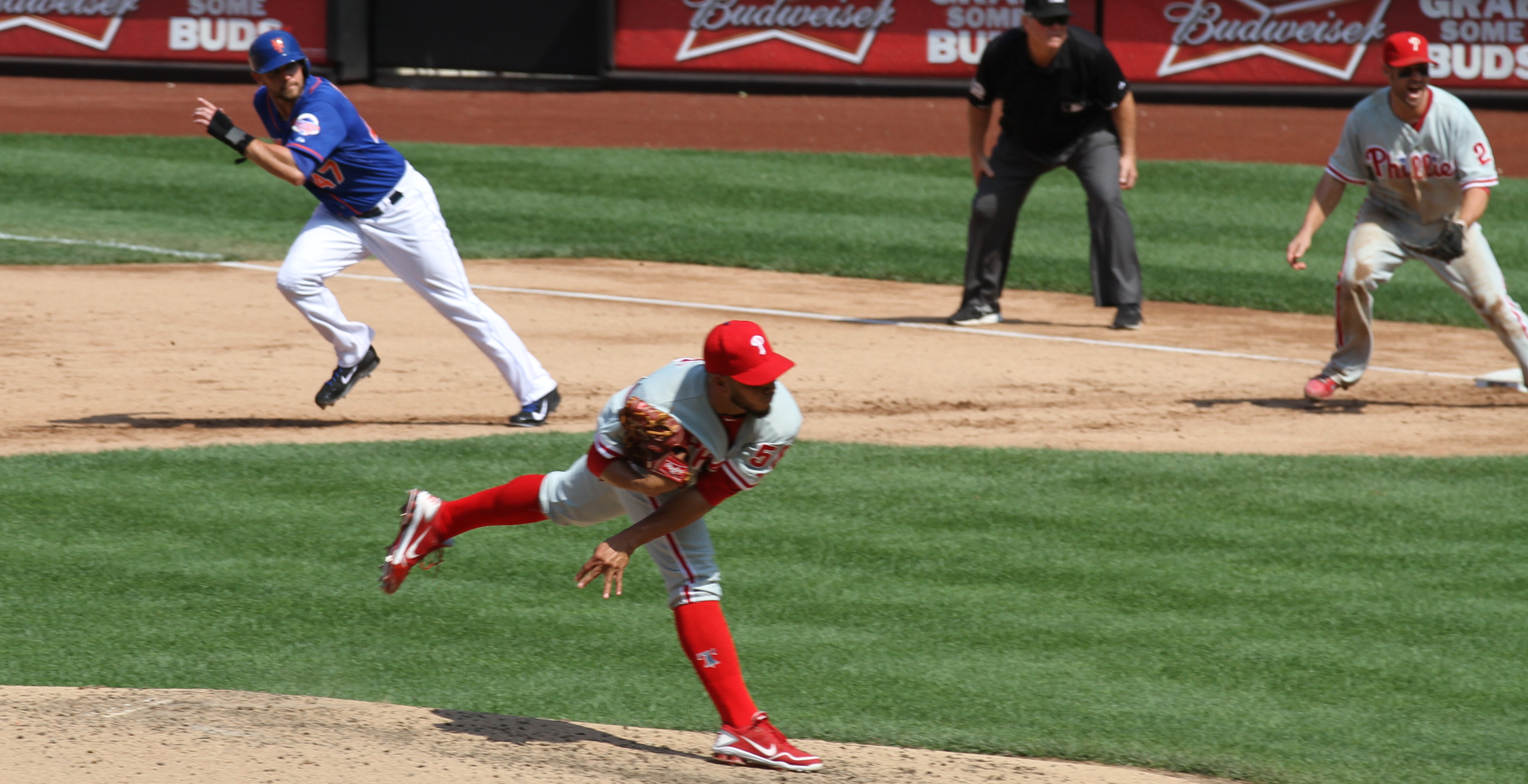What’s the difference between a “hit and run” and a “run and hit”? (Part 1)
October 16, 2014 by Coach McCreary
Filed under Coaching, Hitting
The “hit and run” and “run and hit” are both good plays depending on a variety of variables. Who is batting, the score, the outs, the inning, who is running, and who is up next are some of the questions you might want to answer before deciding which play to use or whether you need to use either one at all.
Below are details for the Hit and Run play. Tomorrow I’ll do the Run and Hit.
The Hit and Run.
- The hit and run is the traditional play where the priority is for the batter to put the ball in play on the ground.
- His job is to hit the grounder away from the middle of the field because that’s where at least one middle infielder will be when the runner breaks towards second base. Hitting it up the middle often turns into an easy double play.
- The batter has the tougher job on this play because he must swing the bat and try to make contact with the pitch no matter where it is thrown – except maybe a ball in the dirt.
- The runners primary job is not to steal the base. His job is to break on the pitch and just be moving when the ball is hit so that the defense cannot turn a double play. Under no circumstances is the runner ever to be picked off. Remember, it’s the batter’s job to protect the runner. The priority is NOT to steal the base.
- The play is good for a slower running hitter who hits a lot of hard ground balls. It’s also good for runners who are not typically base stealers. If the runner was fast enough to steal, the hit and run wouldn’t be necessary.
- Two or three steps after the runner breaks towards second, he MUST look in towards the plate to see what happens with the pitch. If it is hit on the ground then he continues. If it is popped up then he stops and gets back to first. If the pitch is missed he has three options – 1) stop and try to get back to first when the catcher throws to second, 2) continue going to second and hope you make it safely, and 3) stop and get into a rundown – hopefully the defense will screw it up.
- THERE IS NO NEED TO PICK UP (look at) THE THIRD BASE COACH after the pitch because the runner sees for himself what happened on the pitch. At least he should!
- What a runner does on a line drive depends on the coach. I told my players that if the line drive has a chance to be caught by an infielder then just keep running. If he catches it, you’re a dead out anyway even if you try to get back. If it is not caught then the runner easily makes third base at the very least. The runner should be more cautious on line drives hit to the outfield. If an outfielder catches it then he will often be able to get back so it’s worth pausing long enough to see where it is going. If the line drive heads for the gap then the runner should expect to score.
- If the pitch is on the inner half then the batter pulls it. If the pitch is on the outer half then he hits it to the opposite field. In my view, it’s a mistake to force a batter to hit the ball behind the runner no matter where the pitch is. Hitting is hard enough for most kids. A right hander trying to hit a hard fastball up and in on the hands to the opposite field is near impossible. Just hit it where it is pitched. No need to make it too complicated.
- It’s an option when you need one run and have to get the slow runner into scoring position when you don’t want to (or can’t) bunt.
- It’s also a good option when the batter at the plate is in a slump. It forces him to focus more on making contact. Even if he makes an out while moving the runner, his confidence rises because he finally feels as if he is helping the team again. It may be the spark that gets him going!
- Be careful about doing it with your best hitter on deck. If the runner gets to second then the other team can just walk your best hitter with first base now open. The hit and run worked but you just took the bat out of the hands of your best hitter. Of course, that all depends on how smart the other coach is.
- Opinions vary as to how many outs there should be. With no outs, some coaches feel a hit and run just hands the other team an out most of the time and could take away the ability to have a big inning. Others are more optimistic and focus on the fact that if there is a hit then a big inning is likely. With one out, some coaches think staying out of the double play is the priority and therefore put on the play. Others don’t like having to score the runner from second with two outs. They’d rather have the batter swing away with one out and give their offense at least two chances of getting the runner home from first.
There are pros and cons to every strategy in baseball. Learn as much as you can and then trust your instincts.
Tomorrow’s post: What’s the difference between a “hit and run” and a “run and hit”? (Part 2)






Leave a Reply